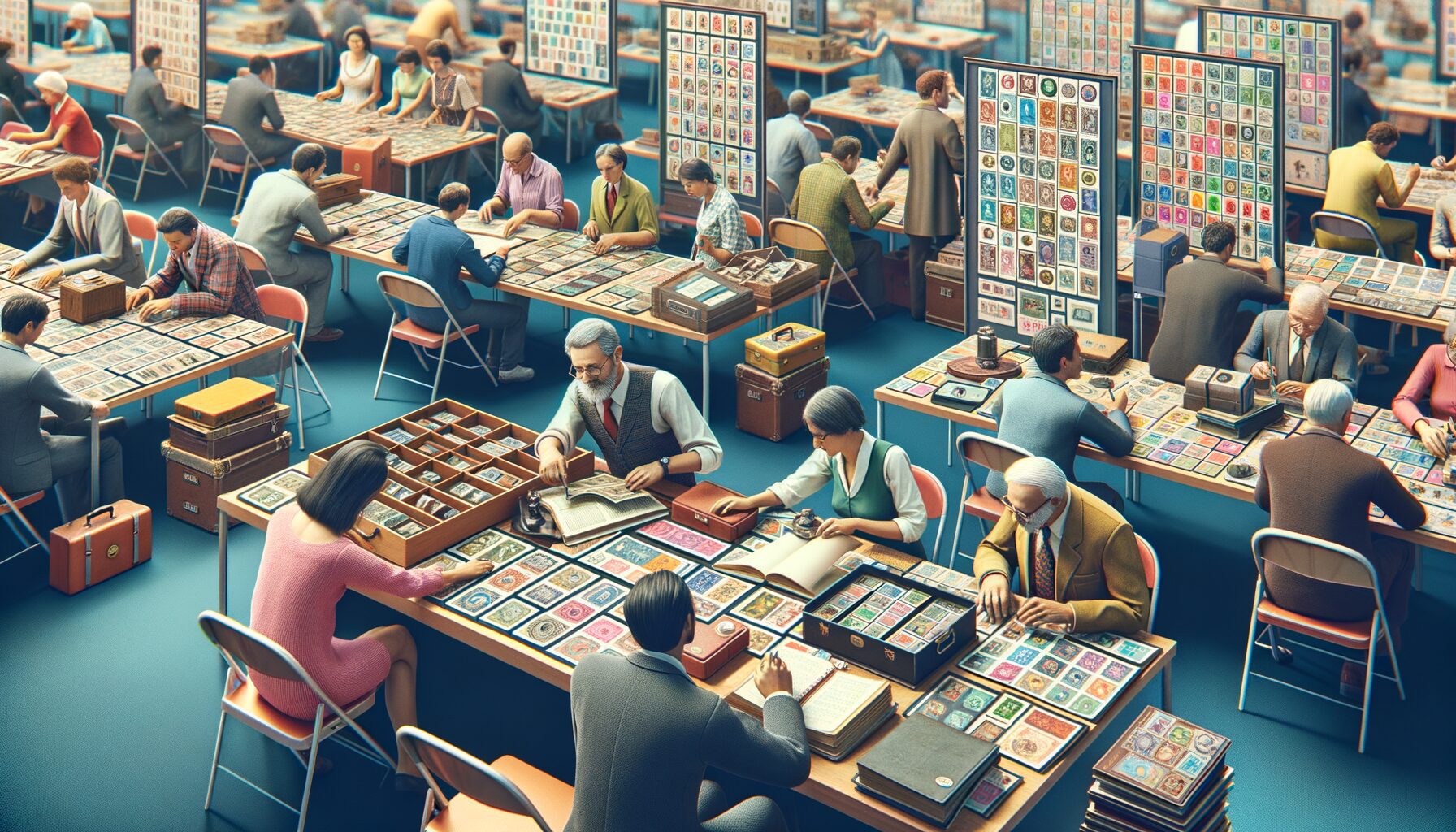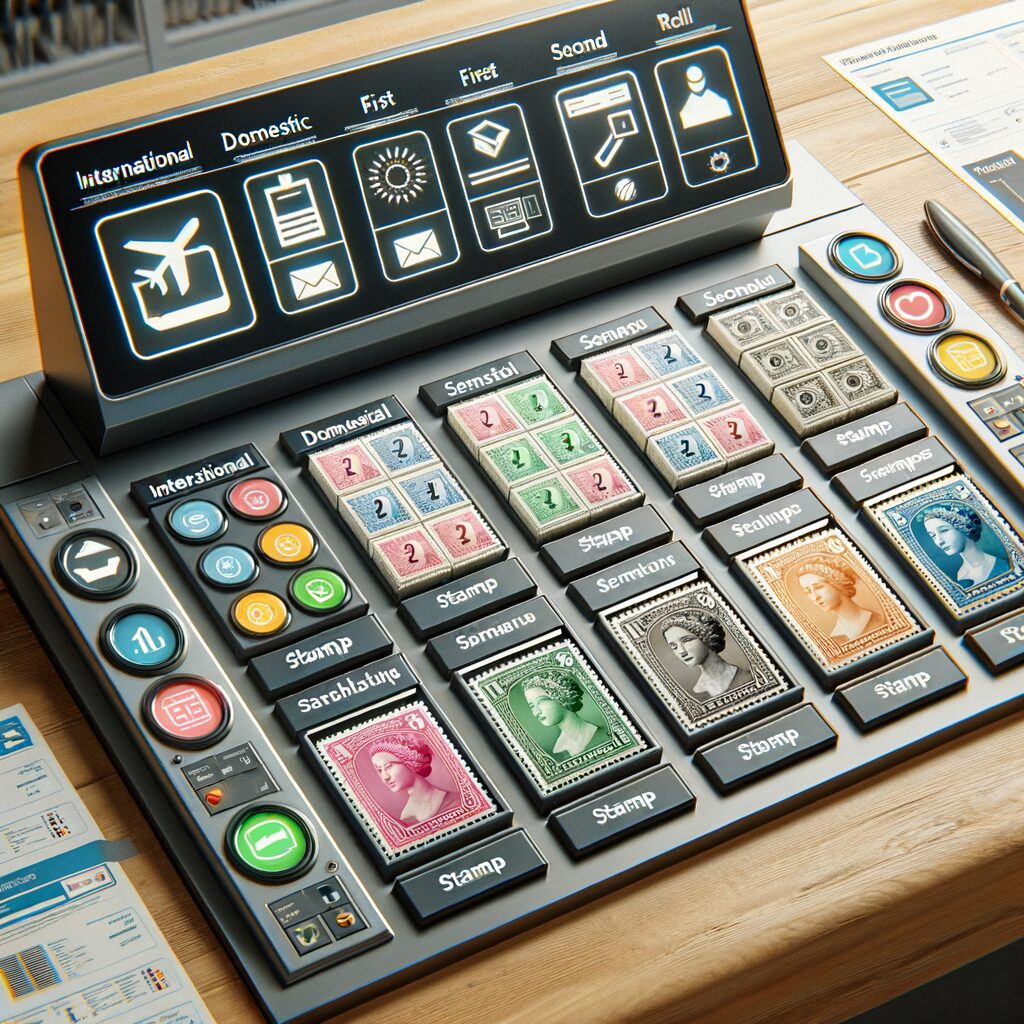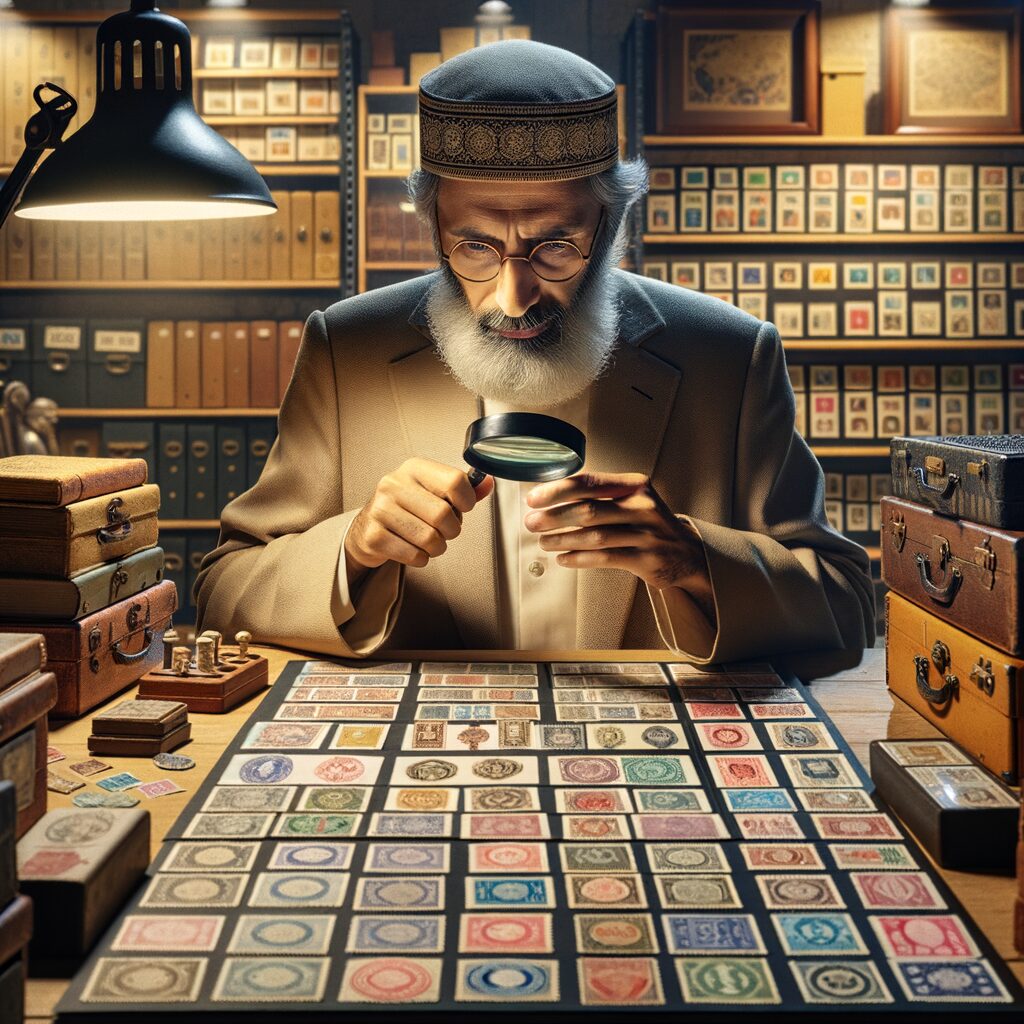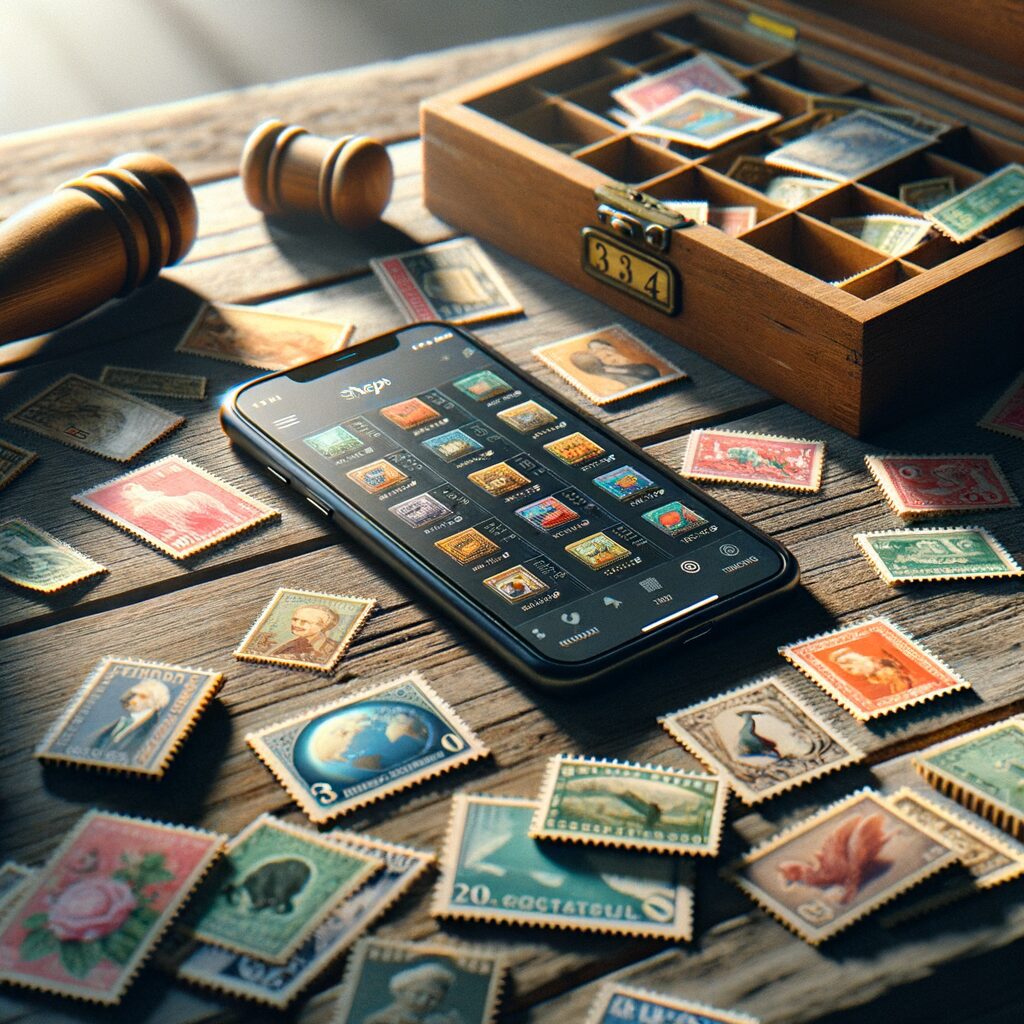Postage Stamp Buyers

Postage stamp buyers come from diverse backgrounds and have various motivations for their purchases. Understanding these different types can provide insight into the broader market dynamics.
Casual Collectors
Casual collectors often buy stamps for personal enjoyment. They may not have extensive knowledge about philately but appreciate the aesthetic and historical aspects of stamps. These buyers typically purchase stamps from local post offices or online marketplaces. Their collections are usually modest and driven by personal interest rather than financial gain.
Philatelists
Philatelists are serious collectors who study stamps in great detail. They often focus on specific themes, countries, or historical periods. Philatelists invest considerable time and resources into their collections. They frequently attend stamp shows, auctions, and engage with specialized dealers. Their collections are meticulously organized and documented, reflecting a deep commitment to the hobby.
Investors
Investors view stamps as a financial asset. They buy stamps with the expectation that their value will appreciate over time. These buyers often seek rare and high-quality stamps, which can command significant prices in the market. Investors rely on expert stamp appraisals and market trends to make informed purchasing decisions. They may also diversify their collections to mitigate risks associated with market volatility.
Hobbyists
Hobbyists collect stamps as a leisure activity. Unlike casual collectors, hobbyists often have a more structured approach to their collections. They may focus on specific themes or types of stamps, such as commemorative issues or stamps from a particular era. Hobbyists enjoy the process of acquiring, organizing, and displaying their collections. They often participate in local stamp clubs and online forums to share their passion with like-minded individuals.
Dealers & Resellers
Stamp dealers and resellers buy stamps with the intention of selling them for a profit. They play a crucial role in the stamp market by providing access to a wide range of stamps for collectors and investors. Dealers often have extensive knowledge about stamp values, market trends, and authentication processes. They may operate physical stores, online shops, or participate in stamp shows and auctions. Resellers, on the other hand, may not have formal businesses but engage in buying and selling stamps as a side activity.
Motivations Behind Stamp Collecting

Many postage stamp buyers are drawn to the historical significance of stamps. Stamps often commemorate important events, figures, and cultural milestones. Collectors with a historical interest appreciate the stories and context behind each stamp. They may focus on stamps from specific historical periods or regions, seeking to build a collection that reflects their historical interests.
Aesthetic Appreciation
The artistic design of stamps attracts many buyers. Stamps often feature intricate artwork, vibrant colors, and unique designs. Collectors who appreciate the aesthetic aspects of stamps may focus on issues with particularly striking visuals. They value the craftsmanship and creativity involved in stamp production. These buyers often seek out limited edition or commemorative stamps that showcase exceptional design elements.
Financial Investment
Some postage stamp buyers are motivated by the potential for financial gain. Stamps can be a valuable investment, with rare and high-quality issues appreciating significantly over time. Investors carefully research market trends and seek expert advice to make informed purchasing decisions. They often focus on acquiring stamps that are likely to increase in value, such as those with historical significance or limited availability.
Social & Community Aspects
Stamp collecting can also be a social activity. Many collectors enjoy connecting with others who share their interest in stamps. They participate in local stamp clubs, online forums, and social media groups. These communities provide opportunities to share knowledge, trade stamps, and build friendships. The social aspect of stamp collecting can be a significant motivation for many buyers.
Educational Purposes
Stamps can serve as educational tools, providing insights into history, geography, and culture. Some collectors are motivated by the educational value of stamps. They may use their collections to teach others or to enhance their own understanding of various subjects. Educational institutions and museums also collect stamps for their instructional value, using them to illustrate historical and cultural lessons.
Where & How To Buy Stamps
Local post offices are a common source for postage stamp buyers. They offer a variety of stamps, including commemorative and special editions. Buyers can purchase stamps directly over the counter. This method ensures authenticity and provides immediate possession of the stamps. Local post offices also offer first-day covers and other philatelic products. These items can enhance a collection and provide additional historical context.

Online Marketplaces
Online marketplaces have become increasingly popular among postage stamp buyers. Websites like eBay and specialized philatelic platforms offer a wide range of stamps. Buyers can browse extensive listings and compare prices from different sellers. Online marketplaces often provide detailed descriptions and images of the stamps. This information helps buyers make informed decisions. However, buyers should be cautious of potential forgeries and misrepresentations. Reading reviews and checking seller ratings can mitigate these risks.
Stamp Shows & Expos
Stamp shows and expos are significant events for postage stamp buyers. These gatherings bring together dealers, collectors, and experts. Attendees can view and purchase a vast array of stamps. Stamp shows often feature rare and high-value items not readily available elsewhere. Buyers can also attend seminars and workshops to enhance their philatelic knowledge. Networking opportunities abound, allowing buyers to connect with others who share their interests. These events provide a comprehensive experience for both novice and seasoned collectors.
Auctions
Auctions offer another avenue for postage stamp buyers. Both live and online auctions present opportunities to acquire rare and valuable stamps. Auction houses often provide detailed catalogs with descriptions and images of the items. Buyers can place bids in person, by phone, or online. Auctions can be competitive, with prices sometimes exceeding initial estimates. However, they also offer the potential to acquire unique and high-quality stamps. Buyers should familiarize themselves with auction procedures and terms before participating.
Specialty Stamp Stores
Specialty stamp stores cater specifically to postage stamp buyers. These stores offer a curated selection of stamps, often focusing on particular themes or regions. Staff members are usually knowledgeable and can provide expert advice. Specialty stores may also offer appraisal and authentication services. Visiting a specialty stamp store allows buyers to examine stamps closely before purchasing. This hands-on experience can be invaluable, especially for high-value acquisitions. Specialty stores often build long-term relationships with their customers, providing ongoing support and guidance.
Considerations For Buyers
Postage stamp buyers should consider several factors when choosing where and how to buy stamps. Authenticity is paramount, particularly for rare and valuable items. Buyers should seek reputable sources and, when possible, obtain certificates of authenticity. Price is another critical factor.
Comparing prices across different platforms can help buyers find the best deals. Additionally, buyers should consider the condition and grading of the stamps. Well-preserved stamps generally hold higher value and appeal. Finally, buyers should be aware of market trends and fluctuations. Staying informed can help buyers make strategic purchasing decisions.
Evaluating & Authenticating Stamps

Stamp grading is essential for determining a stamp’s value. Grading assesses the condition, centering, and overall appearance of a stamp. Common grading terms include “mint,” “fine,” “very fine,” and “superb.” Mint stamps are unused and in pristine condition. Fine stamps may have minor imperfections but are generally well-preserved. Very fine and superb stamps exhibit excellent centering and minimal flaws. Accurate grading requires expertise and experience. Collectors often rely on professional grading services to ensure consistency and reliability.
Identifying Rare & Valuable Stamps
Rare and valuable stamps are highly sought after by collectors and investors. Several factors contribute to a stamp’s rarity and value. Limited production runs, historical significance, and unique design elements can increase a stamp’s desirability. Errors and misprints also add to a stamp’s rarity. For example, the “Inverted Jenny” is a famous misprint that commands high prices. Provenance, or the stamp’s ownership history, can further enhance its value. Collectors should research and verify these factors to identify valuable stamps accurately.
Recognizing Common Forgeries
Forgeries pose a significant challenge in the stamp market. Fraudulent stamps can deceive even experienced collectors. Common forgeries include altered stamps, reproductions, and counterfeit issues. Altered stamps may have added or removed features to mimic rare varieties. Reproductions are unauthorized copies of genuine stamps. Counterfeit issues are entirely fabricated to resemble authentic stamps. Collectors should familiarize themselves with known forgeries and their distinguishing characteristics. Using reference materials and consulting experts can help identify and avoid fraudulent stamps.
Using Expert Appraisal Services
Expert stamp appraisal services provide valuable assistance in evaluating and authenticating stamps. Appraisers have extensive knowledge and experience in philately. They can assess a stamp’s condition, rarity, and value with precision. Appraisal services often include detailed reports and certificates of authenticity. These documents are crucial for high-value transactions and insurance purposes. Collectors should seek reputable appraisers with recognized credentials. Professional organizations, such as the American Philatelic Society, offer directories of qualified appraisers.
Tools & Resources For Authentication
Several tools and resources are available to aid in stamp authentication. Magnifying glasses and microscopes allow for close examination of a stamp’s details. Ultraviolet lights can reveal hidden features, such as watermarks and repairs. Reference books and catalogs provide comprehensive information on stamp issues, varieties, and known forgeries. Online databases and forums offer access to expert opinions and community knowledge. Collectors should utilize these tools and resources to enhance their authentication efforts. Combining multiple methods increases the likelihood of accurate identification.
Considerations For Collectors
Collectors should approach stamp evaluation and authentication with diligence and caution. Thorough research and verification are essential to avoid costly mistakes. Networking with other collectors and joining philatelic societies can provide valuable support and resources. Continuous learning and staying updated on market trends are also important. Collectors should document their findings and maintain records of their stamps’ provenance and condition. This practice not only aids in authentication but also enhances the overall value and appeal of the collection.
Challenges & Trends In The Stamp Market
The rise of digital communication has significantly impacted the stamp market. With the advent of email and electronic messaging, traditional mail usage has declined. This shift has reduced the demand for postage stamps for everyday use. Consequently, postal administrations have issued fewer stamps, affecting the availability of new issues. However, this decline has also led to increased interest in older and rarer stamps. Postage stamp buyers now often focus on historical and collectible items rather than contemporary issues.

Shifts In Collector Demographics
The demographics of stamp collectors have evolved over the years. Historically, stamp collecting was a popular hobby among younger individuals. Today, the average age of collectors has increased. Many younger people are less engaged in traditional hobbies, opting for digital and interactive activities. This shift presents challenges for the future of stamp collecting. However, efforts to engage younger audiences through educational programs and digital platforms are ongoing. These initiatives aim to sustain interest in philately across generations.
Market Volatility & Investment Risks
The stamp market, like any other collectible market, experiences volatility. Prices for rare and valuable stamps can fluctuate based on demand and market conditions. Postage stamp buyers who view stamps as investments must navigate these uncertainties. Economic factors, such as inflation and currency fluctuations, can also impact stamp values. Additionally, the market is influenced by trends and shifts in collector preferences. Investors should conduct thorough research and seek expert advice to mitigate risks. Diversifying collections can also help manage potential losses.
Preservation & Storage Issues
Proper preservation and storage are critical for maintaining a stamp’s condition and value. Stamps are susceptible to damage from environmental factors such as humidity, light, and temperature fluctuations. Postage stamp buyers must invest in appropriate storage solutions, such as acid-free albums and protective mounts. Regular inspection and maintenance are also necessary to prevent deterioration. Improper handling can lead to creases, tears, and other forms of damage. Collectors should follow best practices for handling and storing their stamps to ensure long-term preservation.
Future Of Stamp Collecting & Buying
The future of stamp collecting and buying faces both challenges and opportunities. Technological advancements offer new ways to engage with philately. Digital catalogs, online auctions, and virtual exhibitions provide greater access to stamps and philatelic knowledge. These tools can attract new collectors and enhance the experience for existing ones.
However, the market must also address the aging demographic of collectors. Engaging younger audiences through innovative approaches is essential for the hobby’s sustainability. Collaborative efforts between philatelic organizations, educational institutions, and the stamp industry can drive these initiatives forward.
Postage stamp buyers must adapt to the evolving landscape of the stamp market. Staying informed about trends and challenges is crucial for making informed decisions. By embracing new technologies and engaging with the broader philatelic community, collectors can navigate the complexities of the market. The enduring appeal of stamps, rooted in their historical and artistic significance, continues to inspire collectors worldwide.